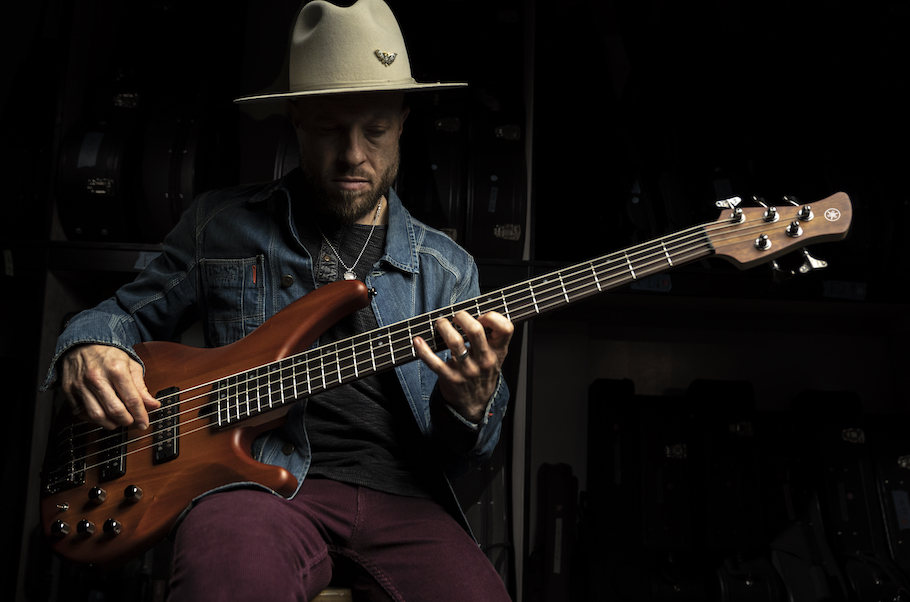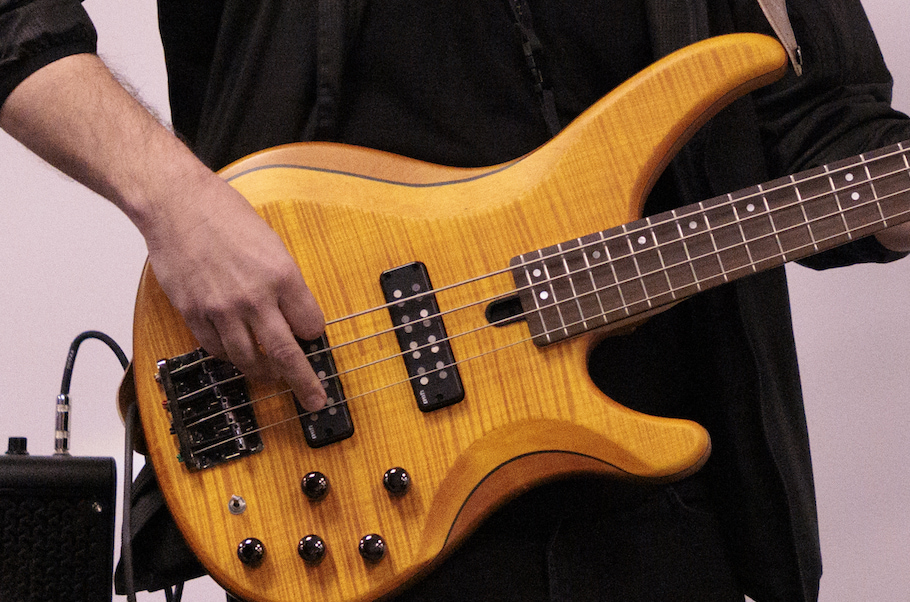Writing Songs from Bass Lines
How to craft a complete song from your riffs.
Strumming a guitar or playing piano is such a standard way to invite and capture musical ideas that even great bass players like Paul McCartney and Sting put down their four-strings when it’s time to write songs. But is it possible to write songs by making magic with your bass riffs? The answer is an unequivocal yes, and in this posting I’ll show you how.
STORY TIME
For our purposes, a “song” is a story we tell with rhythm, melody and harmony — in other words, a pulse you can feel, a line you can hum and a chord progression with a narrative arc, usually organized in terms of intros, verses, choruses, bridges and outros.
Many bassists think of music in terms of single-note bass lines instead of chord progressions. Because we spend most of our time playing the root of each chord, the other notes can be an afterthought. But if you want to add songwriting to your skill set, it’s helpful to learn about chord progressions.
COMMON CHORDS
The order in which chords appear is one of the great foundations of Western harmony. Our ears have become accustomed to certain chord sequences which have been used over and over again, so being familiar with these chord progressions makes it easier to learn tunes and write songs that satisfy (or subvert) listeners’ expectations.
SING IT AND FEEL IT
Chords are important, but even if you’re clueless about a song’s harmony and/or lyrics, the melody can still embed itself in your brain. Bass players are usually supporting vocals and melodic instruments, but we can play melodically too. Besides being fun, playing melodies on bass can aid in learning the fretboard, inspire your soloing, and help you write melodies of your own.
The rhythm of a song is just as crucial — so crucial, in fact, that the same chord progression over a different rhythm can sound like a different tune altogether. As you prepare to write, decide how you want listeners to experience your song’s groove (style and feel), tempo (usually expressed as beats per minute, or bpm for short) and harmonic rhythm (how fast the chords go by).
LET’S JAM
There are several ways to write songs on bass. Try singing a melody to yourself, playing it on bass, and then figuring out chords on bass that work underneath it. You could also take a stock chord progression and make it your own, substituting chords at will. Learning new songs, as well as practicing scales and arpeggios, may also fire up your inner songwriter. Of course, playing with guitarists and pianists is an excellent way to bring your songs to life, but working with samples can be rewarding too. Instead of click tracks, I practice with apps like Drumgenius and frequently find myself coming up with new parts as a result of those jams.
USING RIFFS TO CREATE A SONG
Here’s an example of how you can craft a complete song from a collection of bass riffs. It starts with an idea that came to me one day while I was practicing octaves between the D on the B string and the D on the A string of a Yamaha BB435 five-string bass:
When I played along with a beat, it sounded like an intro to me:
I first tried outlining a D major chord, but it just didn’t feel right, so I made a verse part by playing the root, third, fifth, and flat 7th of D minor instead:
After that first verse, it felt natural to go to the E string and repeat the pattern in G minor (a fourth up from D minor) before returning to D minor. If you’ve ever played a blues pattern, this progression — “going to the four” — will sound familiar:
Continuing the minor bluesy flavor, I played B♭ major for two bars, threw in a fill in G minor, and briefly touched on Fmaj7. After restating the original D minor groove, I played the B♭major-Gm-Fmaj7 progression again:
I then felt like going to a major tonality with a more “open” feel, so I created a new section (Fmaj7-Am7-B♭maj7-Fmaj7-Fmaj7-Am7-B♭maj7-Gm7), most likely inspired by a classic vocal melody:
After the expansive energy of the chorus, it felt right to bring the energy back to D minor:
Now I had a basic structure: intro, verse one (Dm7), verse two (Gm7), back to verse one, then verse three (B♭major-Gm-Fmaj7), verse one again, verse three, chorus (Fmaj7-Am7-B♭maj7-Fmaj7-Fmaj7-Am7-B♭maj7-Gm7), and back to verse one before a fadeout:
Developing this rough idea meant figuring out which chords worked for the bass part, adding a couple layers of keyboards, replacing the drums and carefully finding guitar samples that fit. A sax solo helped complete the vintage feel:
Meticulously arranging vocal samples from a series of loops made this really feel like a complete song, which I titled “It Ain’t Love.” Here’s what the final mix sounds like:
GETTING INSPIRED
As the saying goes, “Genius is one percent inspiration and 99 percent perspiration.” If you stay open to inspiration and are ready to catch it when it happens, you might find that good ideas show up more often. But no matter how (or how often) inspiration strikes, writing songs on bass can definitely be lots of fun!















